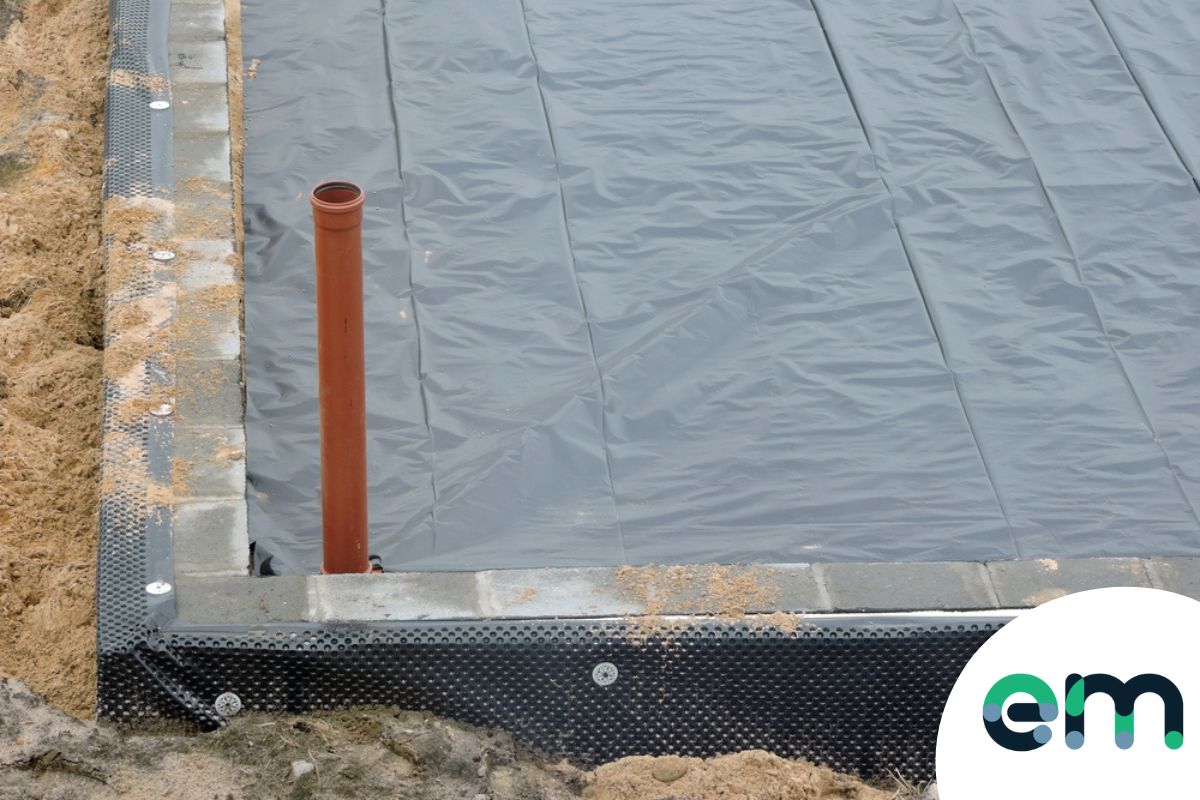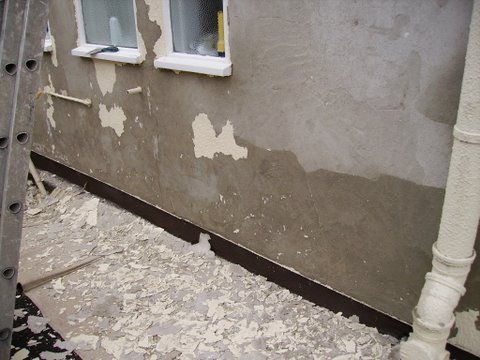Checking Out the Numerous Strategies and Solutions for Effective Damp Proofing
Moisture in structures poses significant difficulties to both structural integrity and indoor air high quality. Different strategies and solutions have actually emerged to combat this prevalent problem. From typical damp-proof membranes to innovative chemical treatments, each technique offers distinct advantages. Comprehending these choices is essential for efficient wetness control. Nonetheless, picking the right solution depends on specific building conditions and needs, motivating more expedition into one of the most effective damp proofing approaches offered.
Recognizing the Sources Of Moisture
Although dampness can arise from various resources, comprehending these causes is important for effective remediation. Typically, wetness stems from three main sources: rising wet, penetrating wet, and condensation. Increasing damp takes place when groundwater travels upwards with porous materials, such as block or stone, commonly because of an absence of an efficient obstacle (damp removal newcastle). Passing through damp is commonly brought on by external variables, consisting of roof leakages, faulty gutters, or damaged wall surfaces, enabling water to infiltrate a property. Condensation, on the other hand, results from excess dampness in the air, usually intensified by poor air flow and temperature level differences, leading to water droplets creating on surfaces. Determining these underlying concerns is important, as each kind of dampness needs a customized strategy for remediation. Appropriate analysis aids in determining one of the most effective options, eventually securing the architectural integrity of a building and improving interior air high quality
Traditional Damp-Proof Membranes

Chemical Damp-Proofing Solutions
Chemical damp-proofing solutions offer an innovative method to stop dampness invasion in structures. These techniques normally entail the application of fluid chemicals that pass through stonework and create an obstacle versus rising damp. Commonly made use of chemicals consist of silanes, siloxanes, and various other water-repellent agents that respond with surface materials to produce a hydrophobic layer.The application process normally needs exploration openings into the walls, infusing the chemical remedy, and permitting it to treat. This method is particularly advantageous for older frameworks where typical damp-proof membrane layers might be impractical. Moreover, chemical damp-proofing can be much less disruptive and more cost-effective than considerable renovation projects.While reliable, these solutions depend upon appropriate application and environmental conditions for peak performance. Normal maintenance and monitoring are vital to guarantee the longevity of the damp-proofing therapy. Generally, chemical damp-proofing represents a versatile alternative for safeguarding buildings versus moisture-related damage
Tooth Cavity Wall Surface Construction Techniques
Tooth cavity wall building strategies provide many benefits, specifically in moisture control and energy performance. By integrating an air space in between two layers of masonry, these walls efficiently alleviate water ingress while boosting insulation. This combination not only safeguards structures from dampness yet likewise adds to decreased power intake.
Advantages of Tooth Cavity Walls
When thinking about reliable wet proofing techniques, the advantages of cavity wall surfaces stand out prominently. Cavity walls include two different layers, creating an air void that successfully decreases moisture penetration. This style decreases the risk of wetness, as the external wall functions as an obstacle against rainfall and water ingress. In addition, cavity walls enhance thermal insulation, which adds to power efficiency by lowering warm loss. They additionally give sound insulation, assisting to produce a quieter indoor atmosphere. Additionally, the air space allows for air flow, which aids in dampness control and decreases the probability of mold and mildew development. These benefits not just boost the total comfort of a structure however likewise add to its long life and structural honesty.
Wetness Control Techniques
Efficient moisture control methods are critical in dental caries wall building and construction to assure lasting defense against wetness. One main approach entails the unification of weep holes, which promote water drainage from the dental caries, preventing buildup. Additionally, the usage of breathable membranes can help manage dampness degrees while allowing trapped vapor to get away. Correct placement of insulation is also essential, as it must not obstruct drain paths. Guaranteeing that the outer leaves of the cavity wall surface are created with waterproof materials improves overall resilience. Routine maintenance checks are important to determine any obstructions or damages early, protecting the structure's integrity. Eventually, a combination of these strategies develops a durable protection against wetness breach in cavity walls.
Insulation and Energy Efficiency
Insulation plays an important function in boosting energy effectiveness within dental caries wall construction. By integrating protecting materials, these wall surfaces create a thermal barrier that lessens heat loss and decreases energy consumption. Effective insulation not only assists keep a steady indoor temperature but likewise reduces the danger of moisture, as it avoids condensation within the wall cavity. Various strategies, such as using inflexible foam boards or mineral wool, can be employed to achieve suitable insulation performance. Furthermore, appropriate installment is important to guarantee that spaces and spaces are minimized, which can otherwise compromise energy performance. Eventually, a well-insulated dental caries wall surface contributes greatly to general sustainability and lowers cooling and heating costs for home owners.
External Damp Proofing Approaches
Exterior damp proofing techniques are necessary for shielding structures from dampness infiltration. 2 reliable strategies consist of the application of waterproof membrane layers and the installation of French drains. These remedies help alleviate water buildup and protect the stability of structures.
Waterproof Membrane Layer Application
While numerous techniques exist for preventing wetness access, the application of water-proof membrane layers continues to be a highly effective outside damp proofing strategy. These membrane layers are typically made from products such as polyethylene, rubber, or changed bitumen, offering a durable barrier against water penetration. The installation procedure includes using the membrane layer to the external surface areas of walls or structures, making certain complete coverage to stop leakages. Proper attachment and securing at joints are crucial to taking full advantage of effectiveness. Waterproof membrane layers can be used in numerous forms, including liquid coverings and sheet membrane layers, enabling flexibility based on the specific requirements of the structure. This technique not just shields buildings from moisture however also boosts their longevity and structural stability.
French Drain Installment
One efficient method for handling groundwater and protecting against dampness buildup around a structure's foundation is the installation of a French drainpipe. This drain system includes a trench loaded with crushed rock and a perforated pipe that redirects surface area water far from the structure. Correct setup calls for cautious planning, making certain that the drain slopes far from the structure to assist in suitable water circulation. Furthermore, the area of the drainpipe is vital; it must be placed in locations prone to pooling or excess moisture. Routine maintenance, including clearing up debris from the gravel and making sure the pipe stays unobstructed, is vital for long-term efficiency. Eventually, a well-installed French drain can significantly lower the danger of water-related issues in foundations and basements.
Inside Waterproofing Strategies
Inside waterproofing strategies are vital for securing a building's interior from wetness seepage and possible water damage. These strategies commonly include the application of specific products and strategies created to produce a moisture barrier within the structure. One usual method is using water-proof coatings or sealers on walls and floors, which prevent dampness from passing through surfaces.Additionally, installing interior water drainage systems, such as sump pumps, can efficiently manage water build-up in cellars and crawl spaces. One more method includes making use of vapor obstacles, which are installed to prevent moisture activity from the ground into living spaces.Moreover, resolving any splits or gaps in walls or foundations with proper sealers assures a comprehensive protection versus water breach. By implementing these interior waterproofing strategies, homeowner can substantially lower the threat of mold and mildew development, architectural damages, and various other moisture-related problems. Appropriate implementation of these strategies is important for long-lasting security and structure honesty.
Normal Upkeep and Evaluation Practices
Routine maintenance and assessment practices are important for guaranteeing the lasting performance of damp proofing solutions in any building. Routine checks make it possible for homeowner to recognize early signs of wetness invasion, such as peeling paint, mold and mildew growth, and moldy smells. These indications can indicate underlying problems that call for prompt attention.Inspections must be carried out at least yearly, concentrating on vulnerable locations like cellars, creep areas, and exterior wall surfaces. Throughout these evaluations, homeowner ought to examine sealers, water drainage systems, and air flow to verify they function correctly.Additionally, keeping seamless gutters and downspouts is vital, as stopped up systems can cause water accumulation near the structure. Executing a normal maintenance timetable, in addition to timely repair services, can considerably extend the life-span of damp proofing procedures and protect the structural integrity of the building. Aggressive measures eventually add to the overall health and wellness of the living setting.
Often Asked Inquiries
Just How Long Does Damp Proofing Normally Last?
The duration of wet proofing effectiveness differs, generally lasting in between 20 to half a century. Factors such as application quality, environmental conditions, and upkeep techniques significantly influence the durability of the wet proofing therapy.

Can I Damp Proof My Home Myself?
The specific contemplated the usefulness of DIY damp proofing. With correct research study and the appropriate materials, it is possible. They additionally acknowledged the significance of professional advice to guarantee long-lasting performance and protect against future concerns.
What Are the Indicators of Inefficient Damp Proofing?
Indications of ineffective moist proofing consist of consistent mildewy odors, visible mold and mildew growth, peeling paint, moist spots on walls, and wood decay - damp removal newcastle. Property owners must resolve these issues immediately to check here stop further damage and wellness problems
Does Damp Proofing Affect Indoor Air High Quality?

Just How Much Does Expert Damp Proofing Cost?
Professional moist proofing prices vary considerably, usually varying from $1,000 to $5,000 depending upon the residential or commercial property's size, the degree of the damp problem, and chosen techniques. Each circumstance calls for a tailored evaluation for precise rates. Commonly, dampness originates from 3 key resources: rising moist, passing through damp, and condensation. When considering efficient moist proofing approaches, the benefits of cavity wall surfaces stand out prominently. Outside damp proofing techniques are important for shielding structures from dampness infiltration. While numerous methods exist for protecting against wetness access, the application of waterproof membrane layers remains an extremely reliable external moist proofing strategy. Indicators of ineffective wet proofing consist of relentless moldy smells, noticeable mold and mildew growth, peeling paint, damp patches on wall surfaces, and timber degeneration.